The Cornell Lab Bird Academy › Discussion Groups › Joy of Birdwatching › Activities: Bird ID Practice
-
Most of these were done from my yard. Activity 1: European Starling and House Finch. The starlings have long, slender bills. The finches have a lot stubbier bills that are taller. The starlings are a lot bigger than the house finches, they are about the size of a robin. The finches are sparrow-sized. Activity 2: The European starling, Eurasian Collared Dove, and House Sparrow, all sport the color black. The European starling is all black with brown speckles.The male House Sparrow has black as a sort of bib and as spectacles. The Eurasian Collared Dove only has black on the "collar" on the back of it's neck. Activity 3: The European Starling (there are a lot by my house if you couldn't tell,) likes to probe in the ground for bugs to eat. Robins do this, too, but like to pull up whole worms! I've seen house finches eating the leaf buds on one of our trees. Activity 4: Red-tailed Hawks vary in color pattern, but usually have brown backs and heads, and can have tan undersides with black speckles. Their cry is a high, piercing KyEEAAHHH. They often glide high on thermal drafts, then descend with claws outstretched to snatch their prey.
-
ok - keeping things quite basic here, as that is where I am. I am looking mostly at water and marsh and shore, and so - Activity 1 by shape are the cormarants v. geese, ducks, and smaller birds, swimming in the marsh that I need someone with me to identify! I am skipping activity 2 for now - it was not a good birdwatching day today. Another rainy chill day here - I do hope to spend some time with the binoculars on my porch to distinguish the various black birds that are not crows. Activity 3, I watched glossy Ibis pecking amongst the marsh grass - I found them by scanning with my binoculars, because at first arrival at my spot only saw a large number of gulls as rest in the marsh. In another spot in the same area, I watched gulls and Osprey hunting by circling above, and moving to a harbor, watched a pair of ducks (white with dark caps), repetively "bottoms-up" for their food. My newly adopted temporary favorite bird, the Glossy Ibis - I now look for or stay-aware for - in the marshy grasses, distinctive by the buff and purple/other colors, slightly smaller, even slenderer than the white snowy egret. And in a group. I am a both enjoying the "enlightening" of this course, and a little discouraged today. I am hoping for more "distance-walking" soon with one or another birder-friend. Almost everyone I know can identify more local birds than me. It helps to keep learning them one at a time.
-
replying to myself which is reidiculous, of course - but after being discouraged yesterday I had emailed a friend with the location, habitat, size, feeding manner and colors of the pair of ducks I'd watched - and got a swift reply of "buffleheads!" - which I'd had in the running for an ID but did not feel secure with. It seems the lessons of this course are informing how I observe, describe and listen ... so that is very satisfying.
-
-
Activity 4: Favorite bird. I like small cuteness. I saw a Black-capped Chickadee for the first time a few weeks ago. Her brown, black and white colorings are not flamboyant, but soothing somehow. Why have I not seen one before? They are year-round inhabitants of British Columbia. Little is hard to spot. I think I was captured by her song. Their body shape is more symmetrical; with a larger head. I like that they feed on seeds, and not gross worms etc. As much as it would be lovely to have birds at home, I do not believe in animals of any kind in cages.

-
I just finished watching 10 Fun Facts about Chickadees| Smart, Tough, & Friendly. I am amazed by their communication and smarts. How does something so small be so intelligent and complex?
-
-
Activity 3: An American Coot was deep diving for plants. Not sure if she is going to share. The Northern Flicker, a member of the woodpecker family, was in woodpecker form making a monster hole in the tree, but feeds on the ground. How does that happen? I did not get a picture, and I found it disturbing, but a Bald Eagle flew overhead with what sounded like a live Starling in his grip. A few weeks ago I saw a Great Blue Heron grab what looked like a mouse in the grass. I had to look it up, as I did not know they would eat those. I am fascinated with birds, but being a vegetarian that grossed me out. lol


-
Activity 1- I can easily identify the Northern Cardinal and Black-Capped Chickadee at my feeders by their different shapes. Activity 2 - Three birds with red on their bodies - a pileated woodpecker with its striking red crest which we see in the trees behind our property, a red-bellied woodpecker, seen at our feeder, whose red is not on its belly but on its head, and a beautiful red-headed woodpecker which I identified with my Merlin app while on a walk. Activity 3 - the robins pick all over the back yard looking for worms. Blue jays seem to be first at the feeder and on the ground beneath each day, scavenging for their breakfast. The house finches are so cute and eat so daintily as they sit on the feeder in pairs. activity 4 - Not necessarily my favorite bird but for sure my favorite bird sighting so far this year. A bird that was new to me, Cedar Waxwing, is a Cardinal-sized bird with a crest and a striking black mask, as well as a band of yellow across the bottom of the tail. We heard rustling in a stand of trees along our driveway and saw birds flying in and out, making a bit of a racket. This went on for 5 minutes or more as I realized they were eating the berries in these trees. There must have been 20 or more birds having quite a feast!

-
Activity 1: two birds easily that I can tell apart by shape- Robin and white crowned sparrow Activity 2: 3 different birds that have the same colour (red/orange) in different parts of their body- Northern flicker, red on the nape of his neck; Spotted Tohee, red down the sides; Varied Thrush red/orange eye stripe and throat Activity 3:Food behaviours -Black capped chickadee taking sunflower seeds from the feeder to a nearby tree and using his feet to hold the seed while he cracks it; Oregon Junco feeds on ground with a jump forwards and back to scratch the surface for seeds; Red rested Nuthatch who creeps along tree trunks often upside down Activity 4: Black capped Chickadee identified by song; Chickadee dee and hamburger; size and shape like a sparrow; colour pattern of black cap and throat and white chest
-
Activity 2: So many ducks! There is the female Mallard, the Gadwall, and then i saw a group of hybrids; all mainly brown. I did not know there were hybrids. I have discovered a great many more ducks just in the last month. And then there are those migrating through. Makes my head spin!
-
Field Guide Ref : Field Guide to Birds of North America, Brinkley, NWF Merlin
-
Acivity 1 Observations at our feeder. Two species similar in size, some of same gray color but distinct shape differences. Female Gold Finch ( Cardulis trots) at a distance and Tufted Titmouse (Baeophulus bicolor). Most remarkable shape difference is the presence of the crest or "tuft" on the Titmouse, but there is also rounded bill top and bottom versus a more straight and pointed topped bottom bill on the Finch. Activity 2 Red Wing Black Bird (Agelaius phoecineus) - Striking scarlet lesser coverts, highlight by yellow median coverts . Brown Headed Cow Bird (Molothrus after) - Brown crown down to nape. Common Grackle - Bronzed (Quiscalas quiscula) - Beautiful blue sheered head down to the nape. All three observed at home feeder. Activity 3 Home feeder observation. Red Bellied Woodpecker (Melanerpes Carolinas) uses feet to hang from feeder perches or other structure to retrieve from seed bin, sometimes completely inverted. Red Winged Black Bird prefers pecking on the ground under the feeder but will approach the feeder perches when ground seed is sparse. Carolina Wren (Thryothorus ludovicianus) hops along ground to peck seed but is always first to feed from feeder bin perches while blackbirds swarm the ground underneath. Activity 4 Favorite is not the most beautiful in appearance but most interesting are its call library of all the birds that visit our feeder. It has a wonderful dialogue that sounds like bubbling water at times but can shift to a high frequency repetitive chirp for flight communication. Bubbling is described as a flocking call in the field guide. Other marks are a subtle brown head to neck blended into the bluish black body. Unlike the Red Wing and Grackel, its body shape is rounder including a rounded beak. The Cowbird is seen in our pastures sometime in a fairly good size flock and at one pair appears to have nested in our Kestrel box this year.
-
1. The difference between the shape of the Hairy Woodpecker and the Northern Flicker, to me, is in the silhouette - the Northern Flicker being more streamlined with a rounder body. 2. Three birds with white on their body: the Black-capped Chickadee, the Mountain Chickadee, and the Black Phoebe. The Black Phoebe's white chest makes it easiest to distinguish. The difference in the two Chickadees is a bit more challenging. The Black-capped Chickadee gives itself away but the Mountain chickadee can masquerade as a Black-cap if one doesn't look carefully at the horizontal white stripe over the head. 3. Robins search the lawns for food - worms and ants and so on. The Red-winged Blackbirds peck beneath the feeder but also feed from the feeder. The Chickadees feed from the feeder but also perched on the Cone-asters for last years' berries. 4. Cassin's Finch frequents mountainous regions where I live. They are a small sparrow-like bird with distinctive color markings of red, gray, and white. They seem to love the feeder and protection of the cottonwoods and evergreen nearby. They seem to often be in pairs - the colorful male with the brown, white striped and freckled female.
-
Activity 1 Today I saw Canada Geese and Buffleheads which were easy to identify by shape. Activity 2 The Red Winged Blackbird has red on a shoulder patch. The Northern Flicker has red on its head and the Redpoll has a red cap. Activity 3 I have Juncos eating at my feeder and on the ground beneath it. Kildeers have arrived and are foraging near a pond. I have been watching a juvenile bald eagle scavenging on roadkill nearby. Activity 4 One of my favorite birds is the Common Loon. I watch loons at the lake in the summer. The loon has a black head, a necklace of black and white stripes and a black and white patterned body. It dives to catch fish . Its feet are at the back of its body and it has an awkward flapping/running type of takeoff in the water. What I love the most is its haunting calls.
-
Activity 1: Two similar birds that are easy to tell apart are my Carolina Chickadees and Tufted Titmice! Though the body shape is similar, I can always spot the tufted titmice from a distance because of their adorable crest. I also love their little round eyes - one of the cutest little birds! Activity 2: We have three different types of woodpeckers in our yard. Similar colors, different sizes and slightly different shapes. I didn’t even know about two of them until this week! The pileated woodpeckers have always been easy to spot, but Merlin helped me identify two smaller woodpeckers - the downy woodpecker and the red-bellied woodpecker! I’ve seen them both on at least two different occasions now! Activity 3: Hummingbirds - they whiz around and light on my nectar feeders. They are also territorial and are always fussing with one another. Cardinals - they love my conventional feeders and are usually easy to spot on all of those. The mourning dove likes to hang around on the ground by the feeders and gets the seed that other birds knock off the feeder. Activity 4: I don’t know if I have an absolute favorite, but I have been enjoying learning about crows lately! They are the biggest of the small birds (or smallest of the big birds), and I can best tell them from Common Grackles because their eyes are all black whereas the grackle has yellow eyes. I can also tell from their flight patterns how they differ from ravens (thanks for that video!). Also, the crow has a caw sound (of their many sounds) whereas ravens do more of a croak. I love seeing crows in groups. We’ve been rearranging the feeders around in our backyard to see what works best, and I spotted about three of them walking around and checking everything out when they thought we weren’t looking. They are so curious and have such an interesting community. If you see one, you know there are almost always more nearby.
-
Activity 1: House Sparrow and Rock Pigeon. Very different shapes. Activity 2: Northern Cardinal, Red-Winged Blackbird, and Northern Flicker. All have red coloring, but in different amounts and locations on the plumage. Northern Cardinal is almost entirely red, usually strikingly so. By contrast, the Red-Winged Blackbird has very noticeable and usually quite bright shoulder patch, while the Northern Flicker has small red bands on the face/head. Activity 3: a) Red-Winged Blackbird scrounging for food on the ground, jumping around and picking at the ground here and there; b) Canada Goose grazing on grass; c) Lesser Scaup diving underwater for food. Activity 4: White-Breasted Nuthatch. Approximately the size of a large sparrow. Beautiful grey back with black flashes. White-breasted (as the name suggests). Black cap. A subtle red splash of color on the belly. These birds creep along tree trunks looking for insects, and they often creep 'upside-down', with their head facing towards the ground. I've only seen them in fairly dense forest where there are an abundance of tree trunks. I usually see them in small groups of 2-3. They are present throughout the year here (Montreal). In the spring months, they are present throughout most of North America.
-
Did all of my activities just by watching the birds in our yard/field and at our feeders. Activity 1: 2 birds I can tell apart by shape are American crow and common grackle (we have plenty of both!). Activity 2: 3 birds with same color (red) on different parts of their bodies are Northern cardinal, house finch, and red wing blackbird Activity 3: Watched the downy woodpecker pecking away at the suet cake on our feeding post. Mourning doves were foraging at the ground feeders and piles of seed on the ground. In the yard was a sparrow (to the best I can narrow it down it was either Savannah or White-throated because it had a yellow patch near the eye but was down in the grass so I couldn't see the chest well) doing something I had never seen before - it was picking away at the dandelion seed heads! Activity 4: Red wing blackbird - medium size, black body with distinct red/yellow stripe on shoulder, feeding on the ground with a distinctive call (the first one I was ever able to recognize clearly and attach it to the bird!).
-
Activity 1 - 2 birds outside my kitchen window - Mourning Dove and Flicker. Mourning Dove often on fence or in tree and different shape. Flicker on ground hopping and pecking at the ground eating or up in a tree. Activity 2 - Ducks - white and Black - Lesser Scaup - white patch on body, top body greyish and bill bluish color. Ring Necked Duck - white part on body and bill have white stripes. Bufflehead - white spot body and head, smaller duck. Saw all three today. Using the spotting scope really helped. What I had thought was a Scaup was a Ring Necked Duck when I used scope, ducks too far away to see all details with binoculars. Also when rainy one day I could not see blue bill. Activity 3 - Northern Harrier flying low to ground to swoop down and catch food. Flicker hopping along and pecking into grass looking for ants. Bufflehead swimming and then diving down in the water for food Activity 4 Saw an American Kestral today eating something on a branch. Was not sure it was a falcon or a hawk I was seeing. Entered grey, orange and white, in a tree, had location at, and size between a robin and crow. Kestral was first one in list. Got our scope on bird and took a picture and that was the bird.
-
Activity 1: Red-winged Blackbird from our bird feeder and Common Grackle from the Cornell feeder . (The Merlin app is easy to use!) Activity 2: Northern Cardinal, Red-bellied Woodpecker, Downy Woodpecker Activity 3: Downy Woodpecker likes to peck at my suet. The Red-bellied Woodpecker prefers the small bird feeder. He latches onto the wires and picks out a peanut from the birdseed mix and then flies away. He never stays for long. The Northern Cardinal is not so much in a hurry to leave. Sometimes he pecks at bird seed on the ground which has fallen and sometimes he gets it from the large bird feeder. Activity 4: Eastern Bluebird (Bird ID): bigger than a sparrow and smaller than a robin; songbird with bright blue back, head and wing markings (if a male), an orange throat and breast and white belly; likes open fields, bird boxes and perches on trees and posts; common in my area but only comes to my bird feeders when it is winter and there's snow on the ground; it has a few distinctive calls and a song that starts loud and distinctive and then gets lower and softer
-
Activity 1: Birds identified by shape: Northern Cardinal and House Finch. Activity 2: Birds identified by a common color (red): Northern Cardinal-all red body with black mask extending from face to chin and throat, large red bill and crest. Male House Finch-an orange red face and rump, with brown cap, a white belly with brown streaks. Red-bellied Woodpecker: A zebra-backed woodpecker with a white rump. Red crown extends down nape of neck. Tan breast with a tinge of red on belly which is often hard to see. Activity 3: Food selection practices: House finches tend to visit feeders, and sometimes the ground, for seeds. Mourning Doves will visit feeders and the ground in search of seeds. Brown-headed cowbirds feed on insects and seeds, often visiting feeders and the ground around seeders for spilled seeds. Activity 4: Favorite bird with ID characteristics: Carolina Chickadee is a small, mostly gray bird with a black cap and chin. It has a white face and chin with a tan belly and darker gray tail. It is a year-round bird of the Carolinas and one of the first birds to use a newly placed feeder. I flies to the feeder, grabs a seed, and carries it back to a branch. It will hold the seed down with its feet
 and pound it open with its bill. It then returns to get another seed. By remaining at the feeder for such a short time, it is thus somewhat difficult to photograph.
Photo shows Male House Finch with american Goldfinch.
and pound it open with its bill. It then returns to get another seed. By remaining at the feeder for such a short time, it is thus somewhat difficult to photograph.
Photo shows Male House Finch with american Goldfinch. -
Activity 1 - I've chosen a couple of birds local to home in Melbourne - the Little Raven and Noisy Miner. The latter being a much small bird with yellow beak and legs, with black head apart from white forehead. Rest of bird is grey with white belly. The Little Raven is totally black apart from a white eye (adult). A little smaller than the Australian Raven - but less common in Melbourne. Activity 2 - White-plumed Honeyeater (white cheek plume), the Magpie Lark (black and white smallish bird with male and female identifiable by different patterns) and the White-winged - Chough (a black bird with a red eye, and a circular white patch on wings visible in flight) Activity 3 - Australian Magpie - spends a lot of time on the ground looking for insects, bugs under grass or just below the surface, Red Wattlebird - feeds on nectar from flowers, Welcome swallow - low level erratic flight after insec ts Activity 4 - Brahminy Kite - a medium sized bird of prey, white head, neck and breast with upper body and wings a reddish brown, black tipped wings. Coastal areas especially in northern Australia. Tends to scavenge on beaches after fish, reptiles, crustaceans. Slow soaring flight.

-
 Vermillion flycatcher seen in a park by my house. He leaves and returns to perch after catching insects on grassy area. My second bird was also might be a flycatcher. It is similar size with a tail that it wags up and down while perched. Head and chest gray with no distinctive markings. I think it is a gray flycatcher but could not get a photo. Song was similar to what I heard on Merlin app.
Vermillion flycatcher seen in a park by my house. He leaves and returns to perch after catching insects on grassy area. My second bird was also might be a flycatcher. It is similar size with a tail that it wags up and down while perched. Head and chest gray with no distinctive markings. I think it is a gray flycatcher but could not get a photo. Song was similar to what I heard on Merlin app.  I believe this is a Anna's hummingbird. Red flash seen on entire head and throat that appears black in photos. Green on back.
I believe this is a Anna's hummingbird. Red flash seen on entire head and throat that appears black in photos. Green on back. -
Activity 3. These are all the birds that were eating at my feeders or scratching at the ground ( Charleston, SC) . Some of the birds I knew already by their shape, size, and color. (e.g., Canadian goose, eastern bluebird, ruby throated hummingbird, woodpecker) but the rest I had to observe, use Merlín and my bird book to be sure. Also, the Carolina Wren I used the song to help identify. Also, what I thought was a crow, turned out to be a grackle. And I didn’t know about the catbird! Also, thanks for the lesson on binoculars. I am getting better with mine and might invest in a better pair. 1 eastern bluebird 2 cardinal 3 Canadian goose 4 Carolina wren, 5 house finch 6 common grackle 7 mourning dove, gray cat bird 8 red-bellied woodpecker
-
Activity 1. Two birds with different shape: Canada goose and red-winged blackbird Activity 2. Three red birds: male northern cardinal (red all over), red-winged blackbird (red on shoulders), and downy woodpecker (red on nape of head) Activity 3. Three foraging styles: house sparrow (ground), great egret (staring/stalking in water), blue jays - seemingly eating anything at all (attacking robin nest, eating seed from a feeder...) Activity 4: Baltimore oriole (I think I posted this already): black head, orange breast; robin size, beautiful flute-like jazzy song, build hanging nest.
-
It seems I can't edit my previous post, so I'll add the last activity here, and also post a question. I don't really have a favorite bird, but Red Wing Blackbirds used to be common in my area, then they disappeared and now they seem to be back and that makes me very happy. I like how when they fly you are surprised by the flash of red and yellow. They are maybe robin sized, with primarily black bodies, and sharp but stout black beak. I see them in the reeds near marshes, but also in trees near wetter areas. They have longish tails and a kind of barky trill like song. Question there are some small sparrow like birds near me but I can't find an id with one that has a black patch on it's neck. The back is various shades of brown like many sparrows with a black or dark brown head. They fly fairly high and move around a lot so it's hard to capture in a picture. They don't seem grey enough to me to be a black capped chickadee. I saw 3 darting on an off a window sill near an air conditioning unit. Any thoughts? Finally, the amount of bird song by my home is fantastic now that we are all at home but I'm going nuts trying to find where the sounds come from!!
-
For activity one I can compare sparrows (there are all different types by me) with a blue jay. They differ in shape, size and color. The second activity seems a bit harder. Selecting black/grey, I can say there are blue jays that have some black on their wing feathers, mocking birds that are overall more black grey, and red wing black birds that are generally black with a reddish orange and yellow on the upper wing. Three birds that search for food differently... Robins hoping on the grass, a woodpecker pecking a tree and sparrows at a feeder and in trees.
-
Activity 1: Red-breasted Nuthatch: small with no neck, head forward and pointed beak, short legs and shortish tail. Lesser Goldfinch: Small, with delicate, upright head, short & stubby beak, med long legs, small body with med length tail. Activity 2: All 3 of these birds are similar in appearance and color. Female House Finch: muted stripes brown & white chest, and plain grey brown on head and body. Golden-crowned Sparrow: solid grayish chest, distinctive black and yellow striped crown, darkish brown wings with some white & gray. White-crowned Sparrow: almost indistinguishable from the Golden-crowned Sparrow, except the crown is white and black striped. Activity 3: California Towhee: hops within low bushes and among leaves & brush on the ground. California Scrub-Jay: picks bees outside hive, suet from feeder, seems to noisily survey many locations from perches on trees then swoops in to pick food. Anna's Hummingbird: Darts to hummingbird feeder, and flowers, then zips up in the air or away to a perch. Activity 4: Great Egret: found near wetlands and brackish water. Often standing still in shallow water. Long, sharp yellow bill, winding long neck. Black legs and feet & large, white body. Flies with neck tucked in and feet extending straight behind body. Stands still waiting for prey and stabs it in a quick motion.
-
Activity 4: Northern Flicker:
- Sounds
- Call: ki-ki-ki-ki-ki-ki-ki-ki-ki
- Distinctive woodpecking
- Habitat:
- Woods and suburbs
- Size and Shape
- Larger than robin, smaller than crow
- Upright
- Coloring
- red nape
- black bib and whiskers
- speckled, fawn-colored breast
- dark-brown wings and back
- Sounds
Read More:
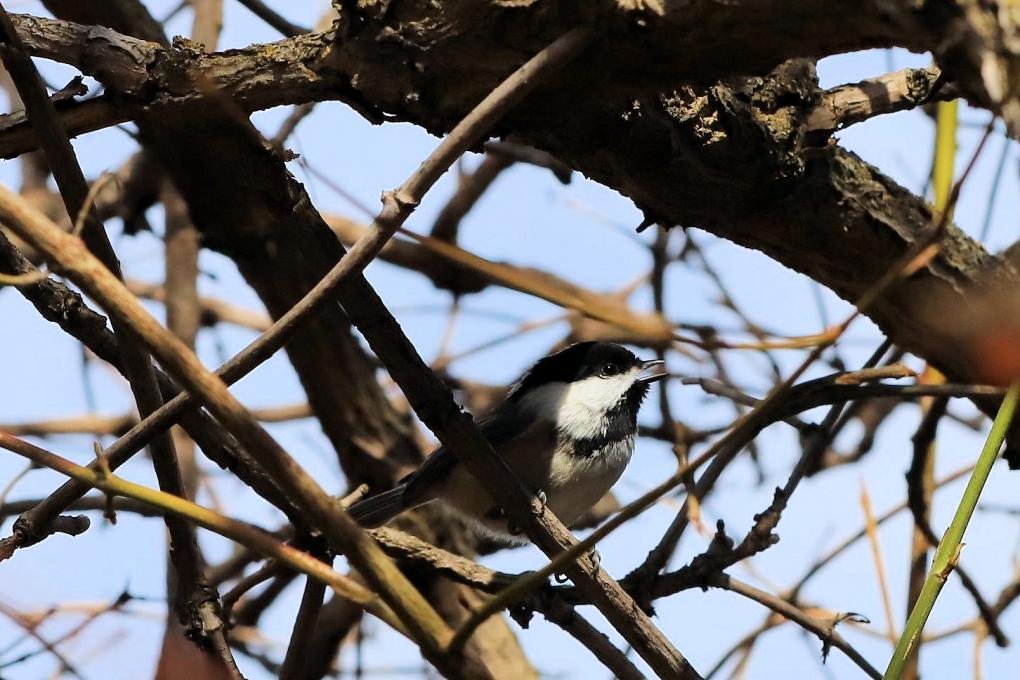
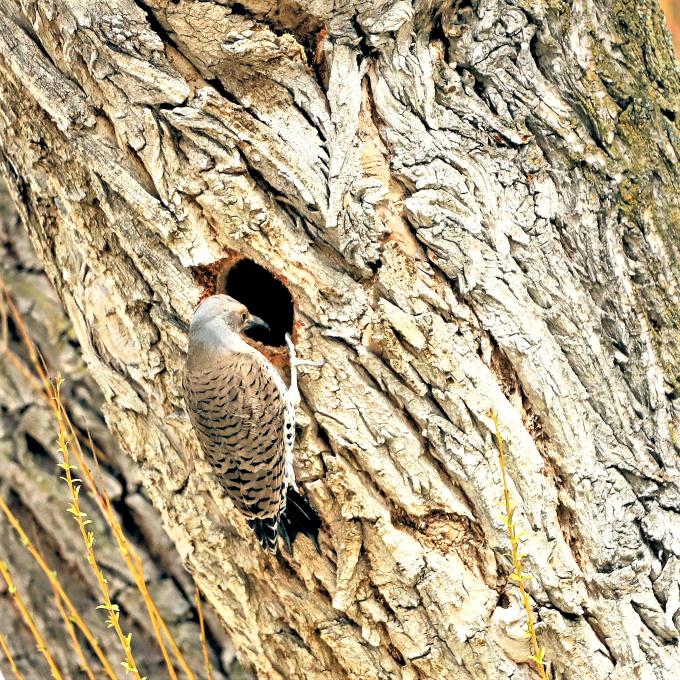
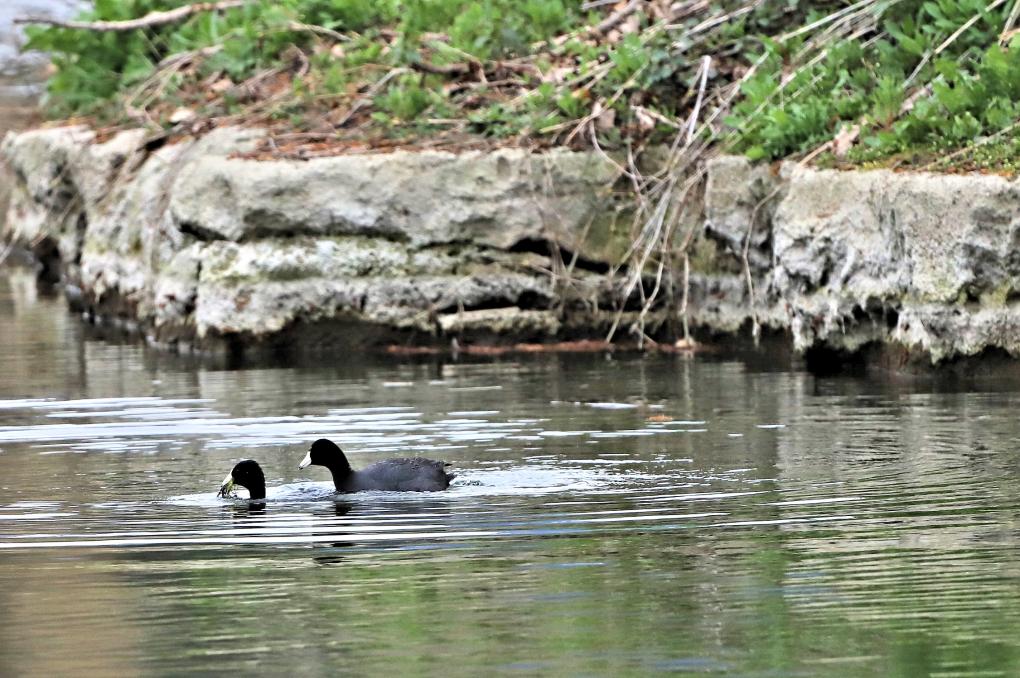
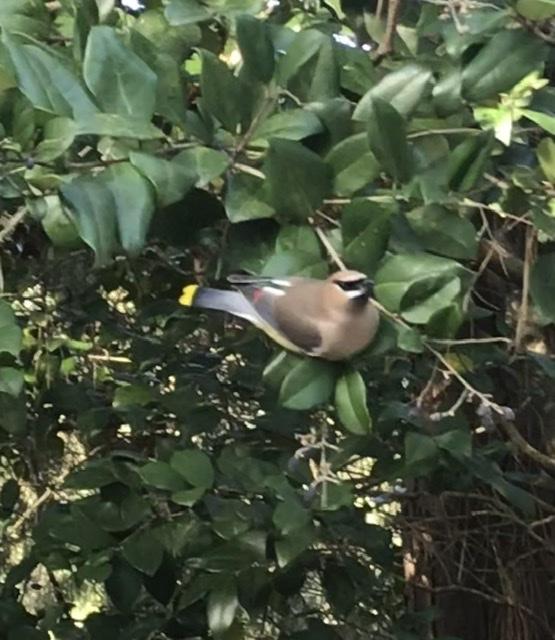
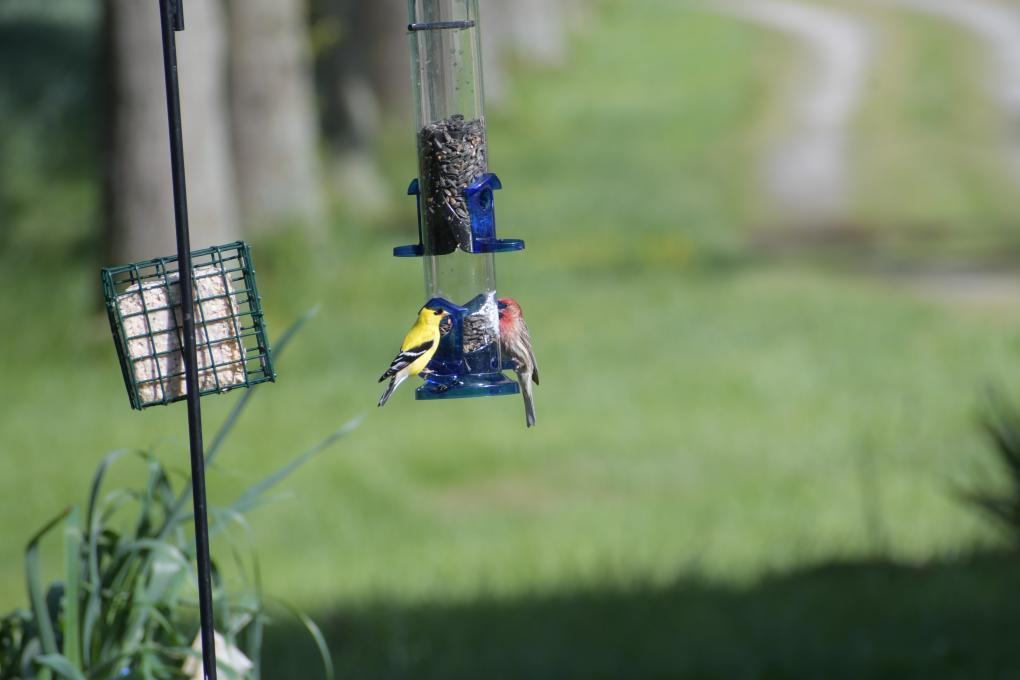 and pound it open with its bill. It then returns to get another seed. By remaining at the feeder for such a short time, it is thus somewhat difficult to photograph.
Photo shows Male House Finch with american Goldfinch.
and pound it open with its bill. It then returns to get another seed. By remaining at the feeder for such a short time, it is thus somewhat difficult to photograph.
Photo shows Male House Finch with american Goldfinch. 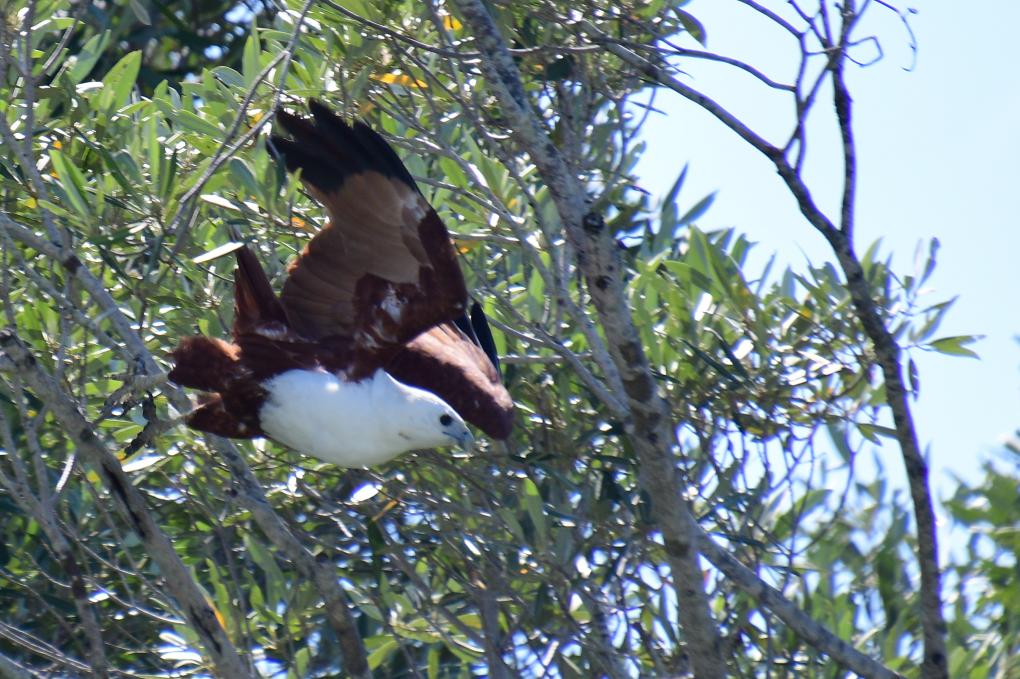
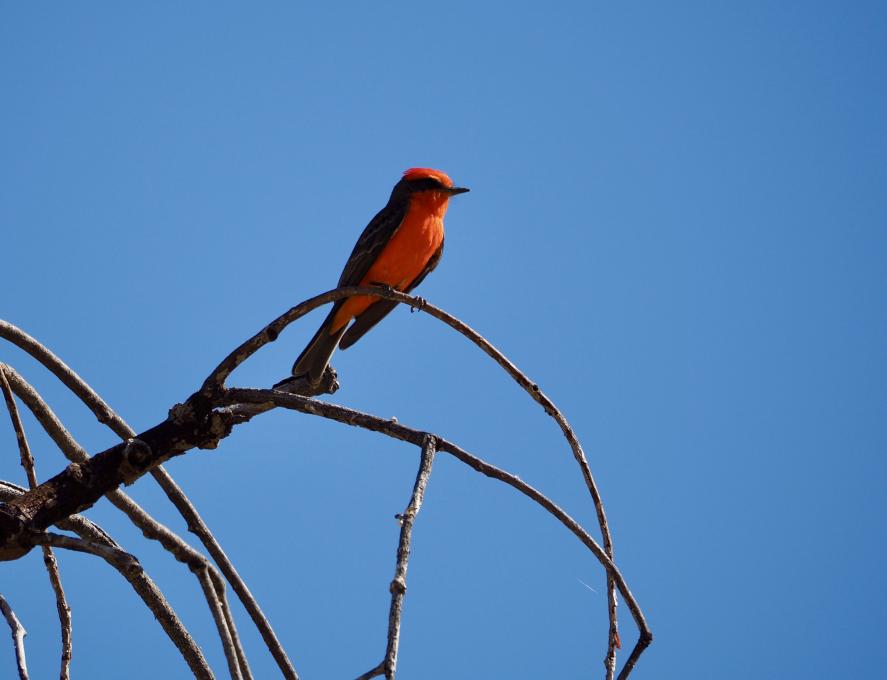 Vermillion flycatcher seen in a park by my house. He leaves and returns to perch after catching insects on grassy area. My second bird was also might be a flycatcher. It is similar size with a tail that it wags up and down while perched. Head and chest gray with no distinctive markings. I think it is a gray flycatcher but could not get a photo. Song was similar to what I heard on Merlin app.
Vermillion flycatcher seen in a park by my house. He leaves and returns to perch after catching insects on grassy area. My second bird was also might be a flycatcher. It is similar size with a tail that it wags up and down while perched. Head and chest gray with no distinctive markings. I think it is a gray flycatcher but could not get a photo. Song was similar to what I heard on Merlin app. 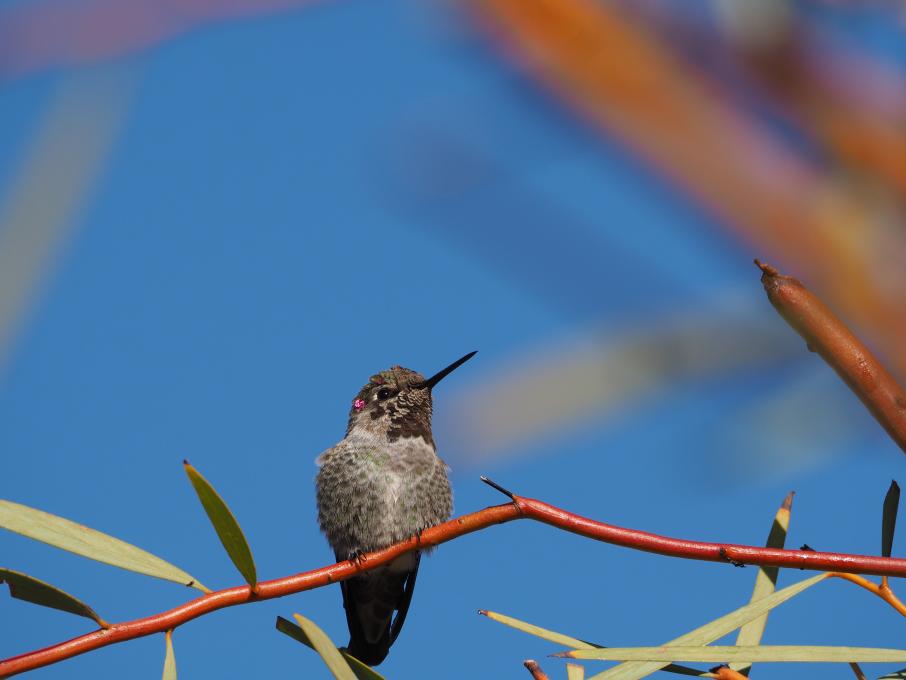 I believe this is a Anna's hummingbird. Red flash seen on entire head and throat that appears black in photos. Green on back.
I believe this is a Anna's hummingbird. Red flash seen on entire head and throat that appears black in photos. Green on back.